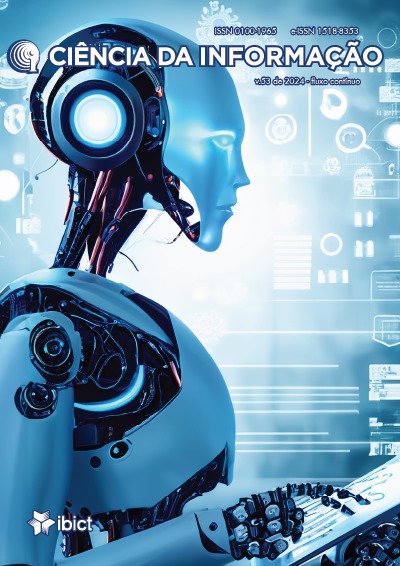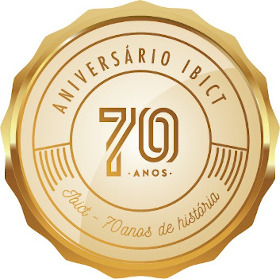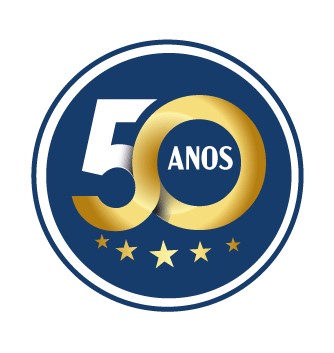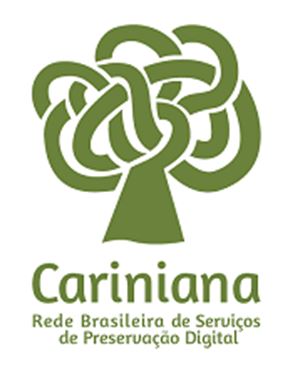Industrial Secret Transfer via Smart Contracts: Addressing Arrow's Information Paradox
DOI:
https://doi.org/10.18225/ci.inf.v53i1.7340Palavras-chave:
industrial secret, Arrow's Information Paradox, smart contract, blockchain, technology transfer, patents, technological informationResumo
In the current state of the art, systems exist for the transfer of intangible assets protected by Intellectual Property, consolidated through legal monopolies, either by attributive systems (such as patents and industrial designs) or automatically protected (such as copyrights and related rights). Some of these systems, or their respective methods, are described in scientific literature. Among these, some methods use blockchain technology, and a smaller subset (entirely contained within the former) also uses smart contract technology, though these are independent tools. Although industrial secrets also constitute monopolies, the computerized or cryptographic solutions applied to other types of assets protected by different forms of intellectual property cannot be applied to these assets due to their sui generis nature, lacking a monopoly that exists independently of their non-disclosure. The need to maintain secrecy arises from Arrow's Information Paradox, a phenomenon in which revealing the secret implies its transfer. This phenomenon hinders the potential transfer of industrial secrets and makes it impossible to adopt existing systems applicable to other types of intangible assets. The research employed a mixed methodology. This paper presents a method for transferring industrial secrets using smart contracts instantiated on blockchain to solve two of the three elements of the Paradox, specifically reliability and capacity, assuming the third, relevance.
Downloads
Referências
AKERLOF, G. A. The market for “Lemons”: quality uncertainty and the market mechanism. The Quarterly Journal of Economics, [s. l.], v. 84, n. 3, p. 488-500. Aug. 1970.
ANTON, J. J.; YAO, A. D. The sale of ideas: strategic disclosure, property rights, and contracting." Review of Economic Studies, [s. l.], v. 69, n. 3, p. 513–531, July. 2002.
ARROW, K. J. Economic Welfare and the Allocation of Resources for Invention. In: National Bureau of Economic Research. (org.). Rate and Direction of Inventive Activity: Economic and Social Factor. Princeton: Princeton University Press, 1962.
BARBOSA, D. B. Do direito de propriedade intelectual das celebridades, em Revista de Propriedade Intelectual. Direito Contemporâneo e Constituição, Aracaju, ano 1, p. 1-99, out./dez., 2012a. Edição n. 01/2012.
BARBOSA, D. B. Uma Introdução à Propriedade Intelectual. 2. ed. rev. atual. São Paulo: Lumen Juris, 2010b.
BARCELLOS, C. A. L. Know How e segredos industriais. In: AZEVEDO, R. (org.). Cartilha da Propriedade Intelectual. Porto Alegre: Ordem dos Advogados do Brasil, 2015. p. 28-29. Available at: http://www.oabrs.org.br/arquivos/file_55d349cb980bb.pdf. Accessed at: 20 fev. 2022.
BARON, R.; CHAUDEY, M. Blockchain and Smart-contract: a pioneering approach of inter-firms relationships? The case of franchise networks. HAL: open science, Lyon, 2019. Available at: https://halshs.archives-ouvertes.fr/halshs-02111603. Accessed at: 13 jun. 2022.
BASSO, F. P.; KREUTZ, D.; RODRIGUES, E.; BERNARDINO, M. Automated technology transfer in MDE as a Service: experiences and research directions. In: WORKSHOP EM MODELAGEM E SIMULAÇÃO DE SISTEMAS INTENSIVOS EM SOFTWARE (MSSIS), 1., 2019, Salvador. Anais [...]. Porto Alegre: Sociedade Brasileira de Computação, 2019. p. 84-93. Available at: sol.sbc.org.br/index.php/mssis/article/view/7563. Accessed at: 7 abr. 2021.
BRASIL. Leis 9.279/96, DE 14 DE MAIO DE 1996. Regula direitos e obrigações relativos à propriedade industrial. Brasília: Presidência da República, 1996.
BRASIL. Lei Nº 9.610, de 19 de fevereiro de 1998. Altera, atualiza e consolida a legislação sobre direitos autorais e dá outras providências. Brasília, DF: Presidência da República, 1998.
BRASIL. Lei Nº 9.609, de 19 de fevereiro de 1998. Dispõe sobre a proteção da propriedade intelectual de programa de computador, sua comercialização no País, e dá outras providências. Brasília, DF: Presidência da República, 1998.
BENKLER, Y. Free as the Air to Common Use: First Amendment Constraints o closure of the Public Domain. New York University Law Review, New York, v. 74, n. 354, p. 354-446, 1999. Available at: benkler.org/Free%20as%20the%20Air.pdf. Accessed at: 10 ago. 2021.
BENKLER , Y. The Wealth of Networks: how social production transforms markets and freedom. London: Yale University Press, 2006.
BURSTEIN, M. J. Exchanging information without intellectual property. Texas Law Review, New York, v. 91, p. 227, 2013. Available at: heinonline.org/HOL/LandingPage?handle=hein.journals/tlr91&div=12&id=&page=. Accessed at: 9 ago. 2021.
BUTTERIN, V. A next-generation smart contract and decentralized application platform. Ethereum White Paper, [s. l.], v. 3, n. 37, p. 2-1, 2014.
CHANG, H.-J. Kicking away the ladder: development strategy in historical perspective. London: Anthem Press, 2002.
CLARK, B. Blockchain and IP Law: a match made in crypto heaven? WIPO Magazine. [S. l.], 2018. Available at: wipo.int/wipo_magazine/en/2018/01/article_0005.html. Accessed at: 7 abr. 2021.
CONOSCENTI, M.; VETRO, A.; MARTIN, J. C. Blockchain for the internet of things: a systematic literature review. In: IEEE/ACS 13th International Conference of Computer Systems and Applications (AICCSA), 13., 2016, Morocco. Conference […]. Morocco: IEEE/ACS, 2016. Available at: ieeexplore.ieee.org/abstract/document/7945805. Accessed at: 9 ago. 2021.
DIAMOND, J. Guns, Germs, and Steel: the fates of human societies. New York: Norton & Company, 1997.
DYRHOVDEN, S. Blockchain and trade secrets: a match made in heaven? London: King’s College, 2019.
ETHEREUM FOUNDATION. Ethereum Whitepaper. [S. l.], 14 Mar. 2015. Available at: ethereum.org/en/whitepaper/. Accessed at: 7 abr. 2021.
FIANI, R. Teoria dos jogos. 3. ed. [S. l.]: Campus, 2015.
FISCHER, W. W. Theories of Intellectual Property. In: MUNZER, S. (ed.). New Essays in the Legal and Political Theory of Property. Cambridge: Cambridge University Press, 2001. p. 168-199. Available at: https://cyber.harvard.edu/people/tfisher/iptheory.pdf. Accessed at: 13 Jan. 2021.
GIL, A. C. Como elaborar projetos de pesquisa. 4. ed. São Paulo: Atlas, 2008.
KÕLVART, M.; PULLA, M.; RUUL, A. Smart Contracts: The Future of Law and eTechnologies. Genebra: Springer, 2016.
LEPPÄLÄ, S. Arrow's Paradox and Markets for Nonproprietary Information. Cardiff Economics Working Papers, [s. l.], n. E2013/2, 2013. Available at: https://orca.cardiff.ac.uk/77948/1/e2013_2.pdf. Accessed at: 10 ago. 2021.
LESSIG, L. Code version 2.0. Nova Iorque: Basic Books, 2006. Available at: codev2.cc/download+remix/Lessig-Codev2.pdf. Accessed at: 7 abr. 2021.
NAKAMOTO, S. Bitcoin: a Peer-to-Peer Electronic Cash System. [S. l.], 2008. Available at: bitcoin.org/bitcoin.pdf. Accessed at: 7 abr. 2021.
QUISQUARTER, J.-J.; MURIEL, M.; GUILLOU, L.; GAÏD, M. A.; SOAZIG, A. G. ; BERSON, T. A. How to Explain Zero-Knowledge Protocols to Your Kids. In: Advances in Cryptology — CRYPTO’ 89 Proceedings, 89., 1989, New York. Proceedings […]. New York: Springer, v. 435. Available at: http://www.cs.wisc.edu/~mkowalcz/628.pdf. Accessed at: 7 abr. 2021.
SANTOS, J. C. Propriedade intelectual com ênfase em trade secrets: Criptologia, Performance Econômica. 2003. Dissertação (Mestrado em Economia) - Centro de Ciências Jurídicas e Econômicas, Universidade Federal do Espírito Santo, Vitória, 2003.
SCOTCHMER, S. Innovation and Incentives. Cambridge: MIT Press, 2004.
SZABO, N. Formalizing and securing relationships on Public Networks. First Monday, [s. l.], v. 2, n. 9, 1997. DOI: doi.org/10.5210/fm.v2i9.548.
WANG, D.; ZHAO, J. WANG Y. A Survey on privacy protection of blockchain: the technology and application. IEEACCESS, [s. l.], v. 8, 2019. Available at: https://ieeexplore.ieee.org/document/9093015. Accessed at: 10 ago. 2021.
ZHENG, Z.; XIE, S.; DAI, H.-N.; CHEN, W.; CHEN, X.; WENG J. IMRAN, M. An overview on smart contracts: challenges, advances and platforms. Future Generation Computer Systems, [s. l.], n. 105, p. 475-491, 2020. Available at: arxiv.org/pdf/1912.10370. Accessed at: 10 ago. 2021.
Downloads
Publicado
Edição
Seção
Licença
Copyright (c) 2024 Erik Schüler, Felipe Octaviano Delgado Busnello, Anderson Ricardo Yanzer Cabra

Este trabalho está licenciado sob uma licença Creative Commons Attribution-ShareAlike 4.0 International License.
- A publicação se reserva o direito de efetuar, nos originais, alterações de ordem normativa, ortográfica e gramatical, com vistas a manter o padrão culto da língua, respeitando, porém, o estilo dos autores;
- As provas finais não serão enviadas aos autores;
- Os autores mantém os direitos totais sobre seus trabalhos publicados na revista Ciência da Informação, ficando sua reimpressão total ou parcial, depósito ou republicação sujeita à indicação de primeira publicação na revista, por meio da Licença Pública 4.0 Internacional Atribuição-CompartilharIgual
- Deve ser consignada a fonte de publicação original;
- As opiniões emitidas pelos autores dos artigos são de sua exclusiva responsabilidade;
- Cada autor receberá dois exemplares da revista, caso esteja disponível no formato impresso.





























